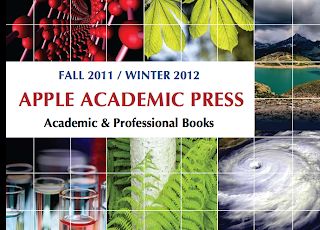Experiment 1: To more completely test my hypothesis that cytoplasmic competence-regulated proteins are induced to mitigate the damage caused by stalled DNA replication, I'm going to test whether cells lacking the proteins DprA or RadC are more sensitive to hydroxyurea than are wildtype cells.
We have all the mutants in the freezer:
- dprA deletion:
- radC deletion:
- rec1 mutation: This is a very old strain, one of the original H. influenzae transformation mutants. It should be completely defective in recombinational repair, but I'm not sure how this interacts with hydroxyurea. Hydroxyurea induces recA in E. coli.
- recB/recC mutation: This is another very old strain, not a modern knockout, but its phenotype was well studied.
I just streaked them all out so I can test them on Saturday. I'll use the same method I did for the first hydroxyurea experiments, growing them to log phase and then diluting them way down to about 2000 cfu/ml in medium with and without 50 mM hydroxyurea and following them for several hours and overnight by plating 50 µl aliquots.
Later: Here's a paper that tested the effect of hydroxyurea on a lot of E. coli mutants. Their assay was the ability to form colonies on agar plates containing 10 mM hydroxyurea. (To me this seems more likely to select for mutants resistant to the effects of hydroxyurea, but that's what they did.) They found that a recA mutant formed 1000-fold fewer colonies, and a recB mutant 10,000-fold fewer colonies.
Later: Here's a paper that tested the effect of hydroxyurea on a lot of E. coli mutants. Their assay was the ability to form colonies on agar plates containing 10 mM hydroxyurea. (To me this seems more likely to select for mutants resistant to the effects of hydroxyurea, but that's what they did.) They found that a recA mutant formed 1000-fold fewer colonies, and a recB mutant 10,000-fold fewer colonies.
Role for radA/sms in Recombination Intermediate Processing in Escherichia coli. Beam, Saveson, and Lovett J. Bacteriol. 2002 vol. 184 no. 24 6836-6844
Experiment 2: While looking for any work on the effects of recA mutations on sensitivity to hydroxyurea, I discovered (i) a paper showing that hydroxyurea induces competence in Legionella pneumophila, and (ii) mention of perhaps-unpublished data showing the same thing for Streptococcus pneumoniae. The L. pneumophila authors state in their Discussion that "We currently favor the hypothesis that stalling of the DNA replication fork is the primary signal leading to competence
development."
So I should definitely also test whether hydroxyurea induces competence in H. influenzae. This will be easy: grow cells to log phase, dilute into medium containing marked DNA (MAP7, 200 ng/ml) and different concentrations of hydroxyurea (0, 5, 10, 20, 50 mM). Grow for 1-2 hr and plate ± novobiocin.
Details added later for experiment 2: I should probably also test cells whose competence has been partially induced with cAMP. Because these cells have a baseline transformation frequency of 10^-5 - 10^-4, I can use them in a dilute culture (say 10^7/ml). The cultures without cAMP will need to be at higher density to detect small effects on competence. Since I've noticed that the concentrations of hydroxyurea that inhibit cell division in dilute cultures are not as inhibitory for denser cultures, I'll include a 100 mM concentration too. (Maybe high concentrations of organic matter partially neutralize or overwhelm the hydroxyurea.)
Details added later for experiment 2: I should probably also test cells whose competence has been partially induced with cAMP. Because these cells have a baseline transformation frequency of 10^-5 - 10^-4, I can use them in a dilute culture (say 10^7/ml). The cultures without cAMP will need to be at higher density to detect small effects on competence. Since I've noticed that the concentrations of hydroxyurea that inhibit cell division in dilute cultures are not as inhibitory for denser cultures, I'll include a 100 mM concentration too. (Maybe high concentrations of organic matter partially neutralize or overwhelm the hydroxyurea.)
Charpentier et al. Antibiotics and UV Radiation Induce Competence for Natural Transformation in Legionella pneumophila J. Bacteriol. March 2011 vol. 193 no. 5 1114-1121.




































